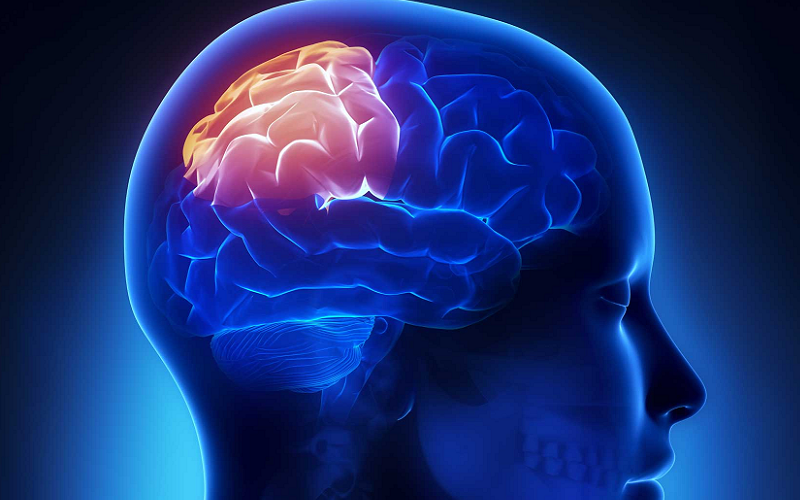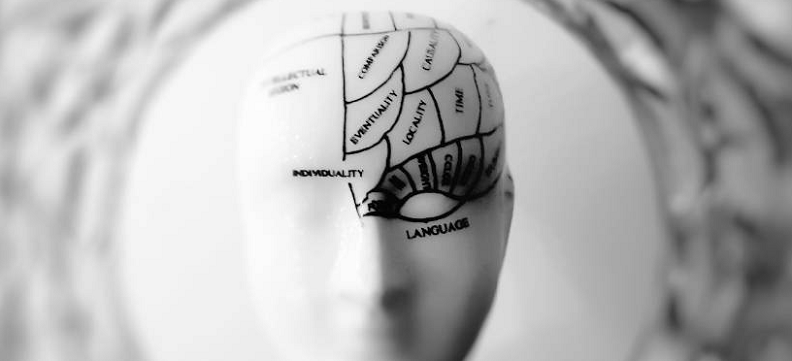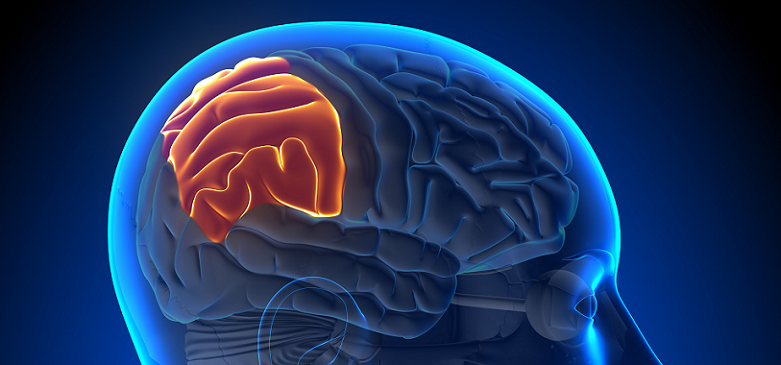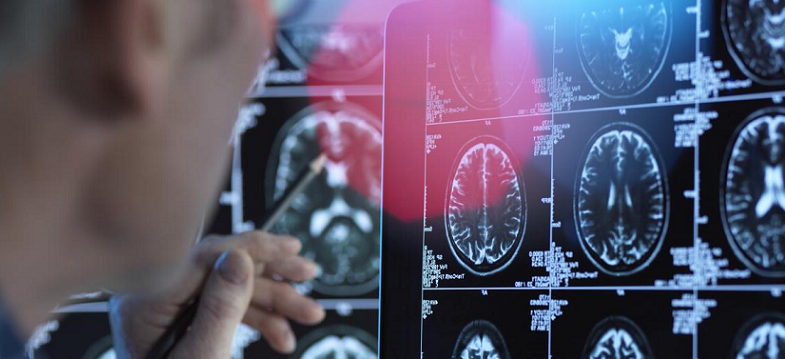
The human brain is a remarkable and complex organ, responsible for our ability to perceive and interact with the world around us. One of its key components is the parietal lobe, which plays a pivotal role in our understanding of space and the integration of information from multiple senses.
Contents
- Anatomy and Function of the Parietal Lobe
- Spatial Cognition and the Parietal Lobe
- Multisensory Integration and the Parietal Lobe
- Disorders and Impairments Associated with Parietal Lobe Damage
- Recent Research and Future Directions in Parietal Lobe Study
- References
Anatomy and Function of the Parietal Lobe
The parietal lobe is one of the four main lobes of the cerebral cortex, the outermost layer of the brain responsible for higher cognitive functions. Situated between the frontal and occipital lobes, the parietal lobe plays a crucial role in various aspects of sensory processing and cognition.
Parietal Lobe Location and Structure
The parietal lobe is located near the top and rear of the brain, posterior to the central sulcus, which separates it from the frontal lobe, and above the lateral sulcus, which distinguishes it from the temporal lobe. It extends to the occipital lobe at the back of the brain. The parietal lobe comprises the cortical tissue responsible for integrating sensory information from different modalities and processing spatial awareness.
Major Divisions of the Parietal Lobe
The parietal lobe is divided into two main regions.
Superior parietal lobule
The superior parietal lobule is located in the upper portion of the parietal lobe. It plays a significant role in spatial cognition, body orientation, and coordinating movement with sensory input [1]. The superior parietal lobule receives input from the primary somatosensory cortex and integrates information from various sensory modalities to create a coherent representation of the body in space.
Inferior parietal lobule
The inferior parietal lobule, situated in the lower portion of the parietal lobe, is involved in various cognitive processes, such as language, mathematical operations, and visuospatial attention [2]. It consists of two essential regions: the angular gyrus, which is implicated in language processing and number manipulation, and the supramarginal gyrus, which plays a role in phonological processing and working memory.
Neighboring Brain Areas and Their Interactions With the Parietal Lobe
The parietal lobe interacts with several neighboring brain areas to facilitate its functions:
- Frontal lobe: The parietal lobe shares reciprocal connections with the frontal lobe, particularly the premotor and prefrontal cortices. These connections allow for the integration of sensory and motor information, enabling smooth and coordinated movement.
- Occipital lobe: The parietal lobe receives visual input from the occipital lobe, primarily the primary visual cortex. This connection allows the parietal lobe to process visual information and incorporate it into spatial awareness and multisensory integration.
- Temporal lobe: The parietal lobe also interacts with the temporal lobe, specifically the hippocampus and surrounding regions, to support spatial memory and navigation. These connections facilitate the formation and retrieval of spatial memories, as well as the perception of one’s position within an environment.

Spatial Cognition and the Parietal Lobe
Spatial cognition is the ability to understand, represent, and manipulate spatial information. It is crucial for navigating our environment, interacting with objects, and processing information from various sensory modalities.
Spatial Cognition and Its Significance in Daily Life
Spatial cognition encompasses a wide range of cognitive processes that enable us to perceive and interpret spatial relationships, navigate through our surroundings, and manipulate objects in space [3]. These abilities are essential for performing everyday tasks, such as driving, reading a map, or reaching for objects.
The Role of the Parietal Lobe in Spatial Attention
Spatial attention is the ability to selectively focus on specific aspects of our environment while disregarding irrelevant information [4]. The parietal lobe plays a critical role in directing and maintaining spatial attention, enabling us to process and interpret essential spatial information.
Visuospatial processing
The parietal lobe is heavily involved in visuospatial processing, which is the ability to perceive and process visual information in relation to the spatial environment [5]. The right hemisphere of the parietal lobe, in particular, is responsible for processing visuospatial information, such as determining the location of objects in space, estimating distances, and perceiving spatial relationships among objects.
Spatial working memory
Spatial working memory, the ability to maintain and manipulate spatial information over short periods, is another crucial aspect of spatial cognition [6]. The parietal lobe, especially the inferior parietal lobule, plays a significant role in maintaining and updating spatial information in working memory, allowing us to perform tasks that require spatial reasoning and manipulation.
Navigation is the ability to find our way through an environment, utilizing spatial information to reach a desired destination. The parietal lobe plays a crucial role in various aspects of navigation, from creating mental maps to updating our position within them.
Mental mapping and path integration
The parietal lobe is involved in creating mental maps of our environment and integrating information from various sources to facilitate navigation [7]. Path integration, or the process of updating one’s position within a mental map based on movement and sensory input, is a critical skill for successful navigation. The parietal lobe interacts with the hippocampus and the entorhinal cortex in the temporal lobe to form and update mental maps and facilitate path integration.
Spatial transformations and perspective-taking
Spatial transformations, such as mentally rotating objects or imagining a scene from a different viewpoint, are essential for navigation and spatial reasoning. The parietal lobe, particularly the superior parietal lobule, is responsible for these transformations, allowing us to adapt to new environments and adjust our mental maps accordingly.
Parietal Lobe and Spatial Reasoning
Spatial reasoning involves the ability to process and manipulate spatial information to solve problems and make decisions. The parietal lobe is central to these processes, enabling us to interpret spatial relationships and interact effectively with our environment.
Spatial problem-solving and decision-making
The parietal lobe plays a crucial role in spatial problem-solving and decision-making by integrating information from various sensory modalities and enabling us to plan and execute actions based on spatial relationships [8]. For example, the parietal lobe helps us determine the most efficient route when navigating through an unfamiliar environment or decide where to place objects to maximize space utilization.
Object manipulation and mental rotation
Object manipulation and mental rotation are essential skills for interacting with our environment and solving spatial problems. The parietal lobe, particularly the superior parietal lobule, is responsible for these abilities, allowing us to mentally rotate objects, estimate their fit in a given space, and manipulate them in relation to other objects [9].

Multisensory Integration and the Parietal Lobe
Multisensory integration is the process by which the brain combines information from different sensory modalities to create a coherent and unified perceptual experience. The parietal lobe plays a crucial role in this integration, allowing us to perceive and interact with our environment effectively.
Multisensory Integration and Its Importance in Perception
Multisensory integration refers to the brain’s ability to combine information from multiple senses, such as vision, hearing, and touch, to create a comprehensive understanding of our surroundings. This process is vital for perception, as it enhances the reliability and accuracy of sensory input, facilitates object recognition, and helps us interact with the world more effectively.
The Role of the Parietal Lobe in Integrating Sensory Information
The parietal lobe integrates sensory information from various modalities, enabling us to perceive and respond to our environment coherently. Key aspects of this integration process include:
Auditory-visual integration
The parietal lobe plays a critical role in combining auditory and visual information to localize objects in space and perceive events accurately [10]. This integration enables us to associate sounds with their corresponding visual sources and react to events in our environment more effectively.
Tactile-visual integration
Tactile-visual integration involves combining touch and visual information to create a coherent perception of objects and their properties. The parietal lobe, particularly the posterior parietal cortex, is responsible for this integration, allowing us to perceive and manipulate objects based on their size, shape, and texture [11].
Vestibular-visual integration
The parietal lobe is also involved in integrating vestibular (balance and spatial orientation) and visual information to maintain spatial awareness and postural stability [12]. This integration helps us perceive our position and movement within the environment and adjust our body position accordingly.
Parietal Lobe and Body Awareness
Body awareness is our perception of our body’s position and movement in space, which is crucial for coordinating actions and interacting with the environment. The parietal lobe is deeply involved in this aspect of perception, processing proprioceptive information and creating a mental representation of our body.
Proprioception and body schema
Proprioception is the sense of the position and movement of our body parts relative to each other [13]. The parietal lobe, specifically the posterior parietal cortex, is involved in processing proprioceptive information and creating a body schema, a mental representation of our body’s configuration in space. This body schema is essential for coordinating movement and interacting with objects in our environment.
The rubber hand illusion
The rubber hand illusion is a well-known demonstration of the parietal lobe’s role in multisensory integration and body awareness. In this experiment, participants view a fake hand being stroked synchronously with their hidden real hand, leading them to perceive the fake hand as part of their body. This illusion highlights the parietal lobe’s involvement in integrating visual, tactile, and proprioceptive information to create a coherent body representation.
Parietal Lobe and Attentional Modulation of Multisensory Integration
Attentional modulation plays a significant role in the integration of information from multiple senses, influencing how we perceive and react to our environment. The parietal lobe is essential in this process, modulating our attention to focus on relevant stimuli and enhance multisensory processing.
Attentional capture and spatial attention
The parietal lobe is involved in the attentional capture of multisensory stimuli, which occurs when a stimulus from one sensory modality captures our attention and influences the processing of information from other modalities [14]. This process helps us focus on relevant information and ignore irrelevant stimuli.
Effects on perception and behavior
Attentional modulation of multisensory integration by the parietal lobe can have significant effects on our perception and behavior. For instance, directing attention to a specific location can enhance the integration of stimuli from multiple senses, leading to more accurate object localization and improved reaction times.

Disorders and Impairments Associated with Parietal Lobe Damage
Damage to the parietal lobe can result in various cognitive and perceptual impairments, affecting an individual’s ability to process spatial information and integrate sensory input.
Hemispatial Neglect
Hemispatial neglect, also known as unilateral spatial neglect, is a condition in which an individual fails to attend to or perceive stimuli on one side of their environment, typically the side opposite the damaged parietal lobe [15]. This disorder often occurs following a stroke or traumatic brain injury and can manifest as difficulty navigating, reading, or recognizing objects on the affected side.
Gerstmann Syndrome
Gerstmann syndrome is a rare neurological disorder associated with damage to the dominant (usually left) inferior parietal lobule. It is characterized by four primary symptoms: finger agnosia (inability to identify or distinguish fingers), acalculia (difficulty with mathematical calculations), left-right disorientation, and agraphia (difficulty writing).
Balint’s Syndrome
Balint’s syndrome is a rare condition resulting from bilateral damage to the parietal lobes, particularly the posterior parietal cortex [16]. It is characterized by three main symptoms: simultanagnosia (inability to perceive multiple objects simultaneously), optic ataxia (difficulty reaching for objects under visual guidance), and oculomotor apraxia (difficulty directing gaze to a specific object).
Apraxia
Apraxia is a neurological disorder characterized by difficulty performing skilled movements, despite having the necessary muscle strength and coordination. Damage to the parietal lobe, specifically the left posterior parietal cortex, can result in ideomotor apraxia, which is the inability to perform a movement or gesture upon command, even though the individual can perform the same movement spontaneously or in response to a real-life situation.
Sensory Impairments
Damage to the parietal lobe can also lead to sensory impairments, such as astereognosis (difficulty recognizing objects by touch) and impaired proprioception (loss of the sense of body position). These impairments can affect an individual’s ability to perform daily tasks, such as dressing or identifying objects by touch alone.
Phantom Limb Pain
Phantom limb pain is a phenomenon experienced by some amputees, in which they perceive painful sensations in the missing limb. While the exact cause of this phenomenon is still not fully understood, it is believed that the parietal lobe, particularly the primary somatosensory cortex, plays a role in the development of phantom limb pain through the reorganization of cortical maps representing the body.
Recent Research and Future Directions in Parietal Lobe Study
The parietal lobe’s complex role in spatial cognition, multisensory integration, and body awareness has led to numerous research efforts aimed at better understanding its functions and developing new interventions for related disorders. .
Neural Mechanisms Underlying Spatial Cognition
Recent research has sought to uncover the neural mechanisms responsible for spatial cognition, utilizing advanced imaging techniques such as functional magnetic resonance imaging (fMRI) and magnetoencephalography (MEG). These studies have helped identify specific parietal lobe subregions involved in various aspects of spatial cognition and the dynamic interactions between these regions and other brain areas.
Parietal Lobe Plasticity and Rehabilitation
The parietal lobe’s capacity for plasticity, or the ability to adapt and reorganize in response to injury or experience, has been a topic of considerable interest. Studies investigating the effects of non-invasive brain stimulation techniques, such as transcranial magnetic stimulation (TMS) and transcranial direct current stimulation (tDCS), have shown promise in enhancing plasticity and promoting functional recovery in individuals with parietal lobe damage.
The Role of the Parietal Lobe in Immersive Virtual Reality
Immersive virtual reality (VR) has emerged as a valuable tool for studying spatial cognition and multisensory integration in controlled environments. Recent research has employed VR to investigate the parietal lobe’s involvement in spatial navigation, perspective-taking, and body representation, offering novel insights into the neural processes underlying these abilities.
Parietal Lobe and Artificial Intelligence
The study of the parietal lobe’s functions has also inspired the development of artificial intelligence (AI) algorithms and systems that can perform spatial reasoning and multisensory integration tasks. Understanding the neural basis of these abilities in the human brain can inform the design of AI systems capable of more human-like spatial cognition and perception.
Early Detection and Intervention for Parietal Lobe Disorders
Research efforts are also focused on identifying early biomarkers and developing interventions for disorders associated with parietal lobe dysfunction, such as Alzheimer’s disease and developmental disorders. Advanced neuroimaging techniques and machine learning algorithms can potentially be used to detect early signs of parietal lobe dysfunction and inform targeted interventions to mitigate or prevent the progression of related disorders.
References
[1] Heterogeneous Representations in the Superior Parietal Lobule Are Common across Reaches to Visual and Proprioceptive Targets
[2] Functional specialization within the inferior parietal lobes across cognitive domains
[3] Three Kinds of Spatial Cognition
[4] Selective attention to spatial and non-spatial visual stimuli is affected differentially by age
[5] The Role of the Parietal Lobe in Visual Extinction Studied with Transcranial Magnetic Stimulation
[6] How Are Visuospatial Working Memory, Executive Functioning, and Spatial Abilities Related?
[7] Knowledge Across Reference Frames: Cognitive Maps and Image Spaces
[8] The Insula: Deciphering the Role of the Brain’s Hidden Island
[9] Functional specialization within the inferior parietal lobes across cognitive domains
[10] Parietal Lobe: Definition, Functions, Structure & Location
[11] A brief comparative review of primate posterior parietal cortex: a novel hypothesis on the human toolmaker
[12] Which Effects on Neuroanatomy and Path-Integration Survive? Results of a Randomized Controlled Study on Intensive Balance Training
[13] The Proprioceptive Senses: Their Roles in Signaling Body Shape, Body Position and Movement, and Muscle Force
[14] The Curious Incident of Attention in Multisensory Integration: Bottom-up vs. Top-down
[15] Unilateral Neglect
[16] Balint syndrome: All you need to know

